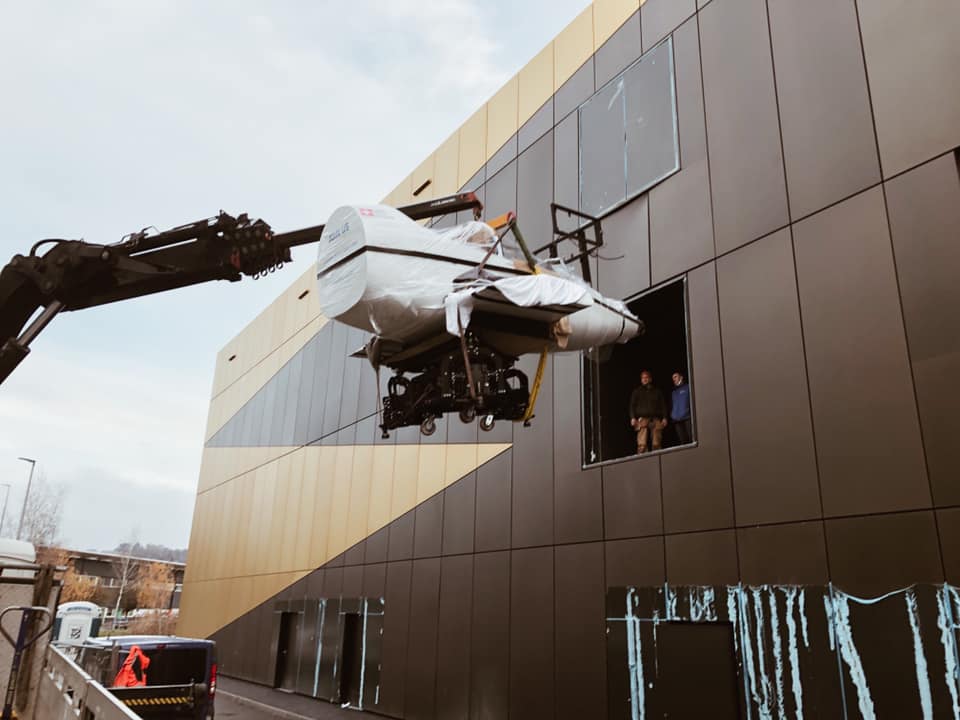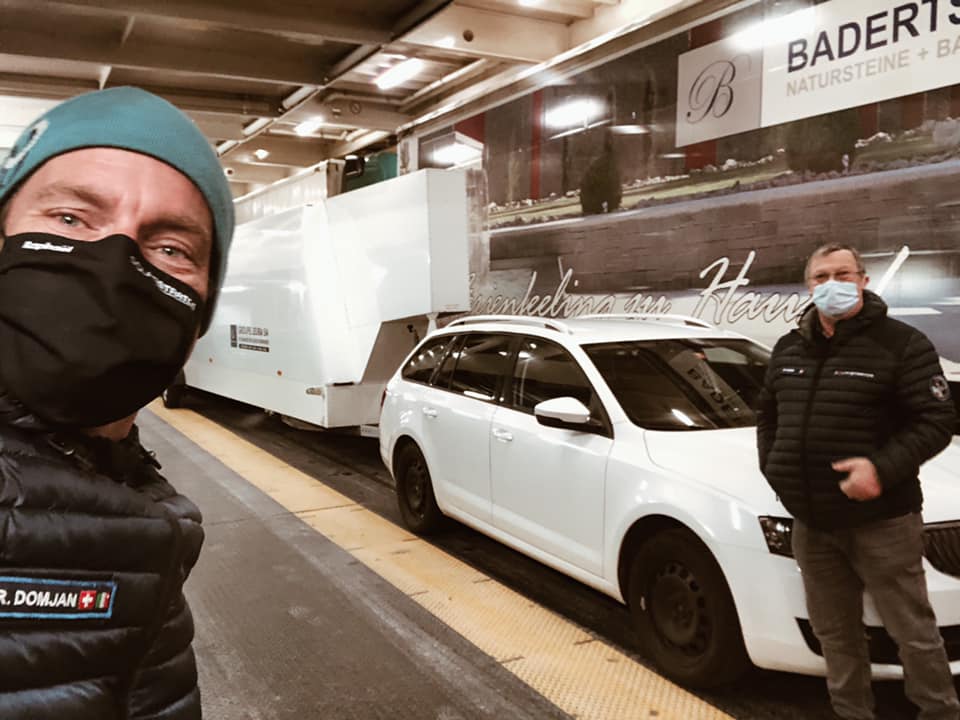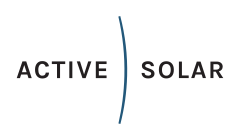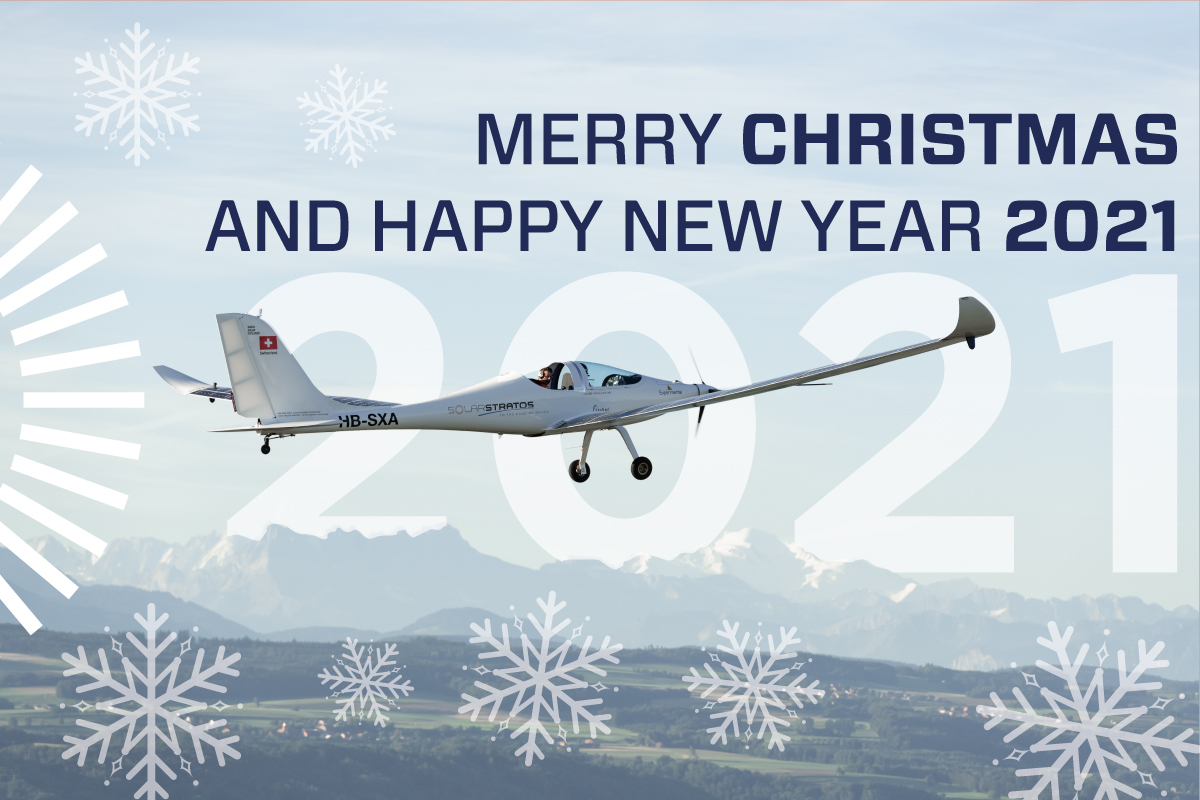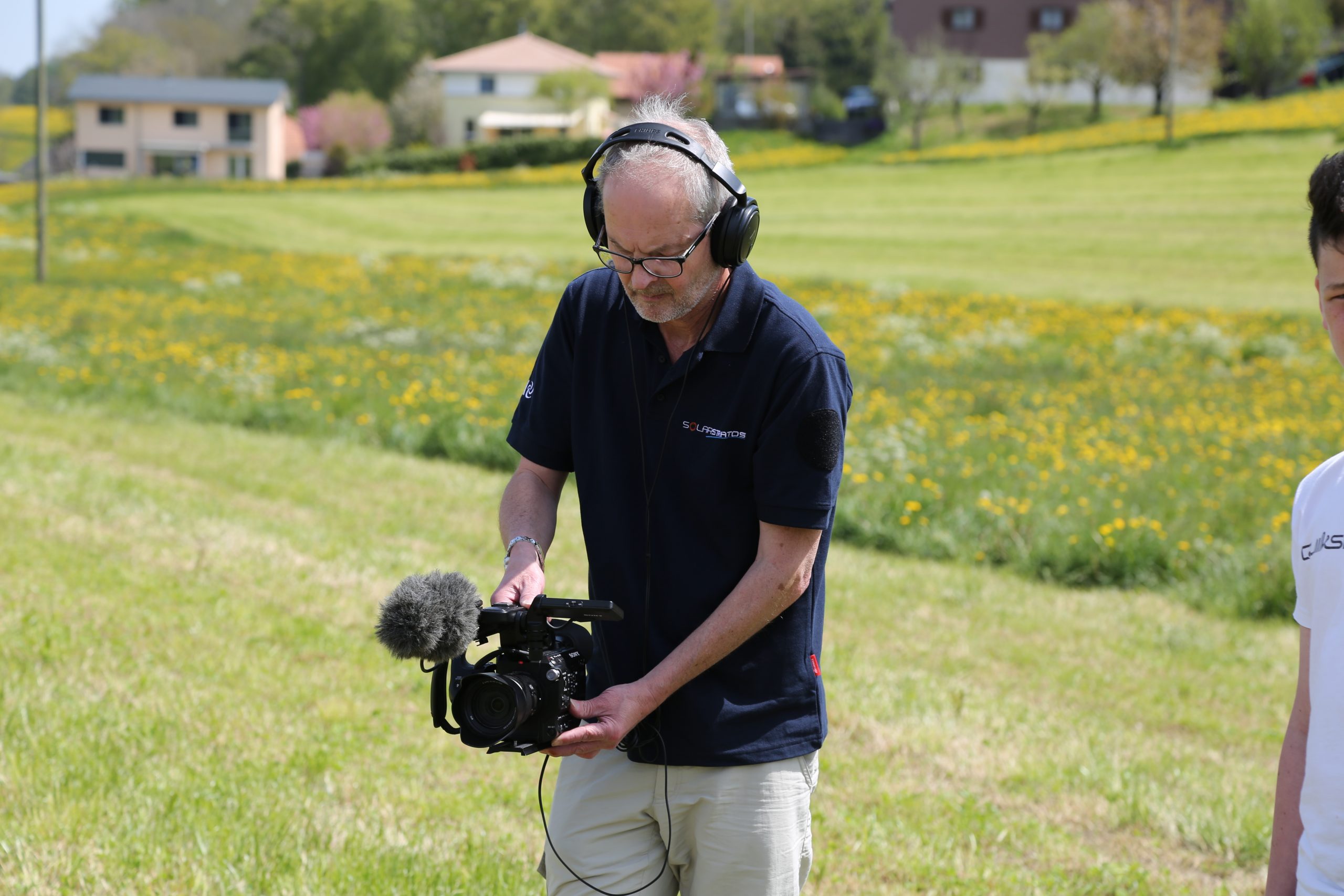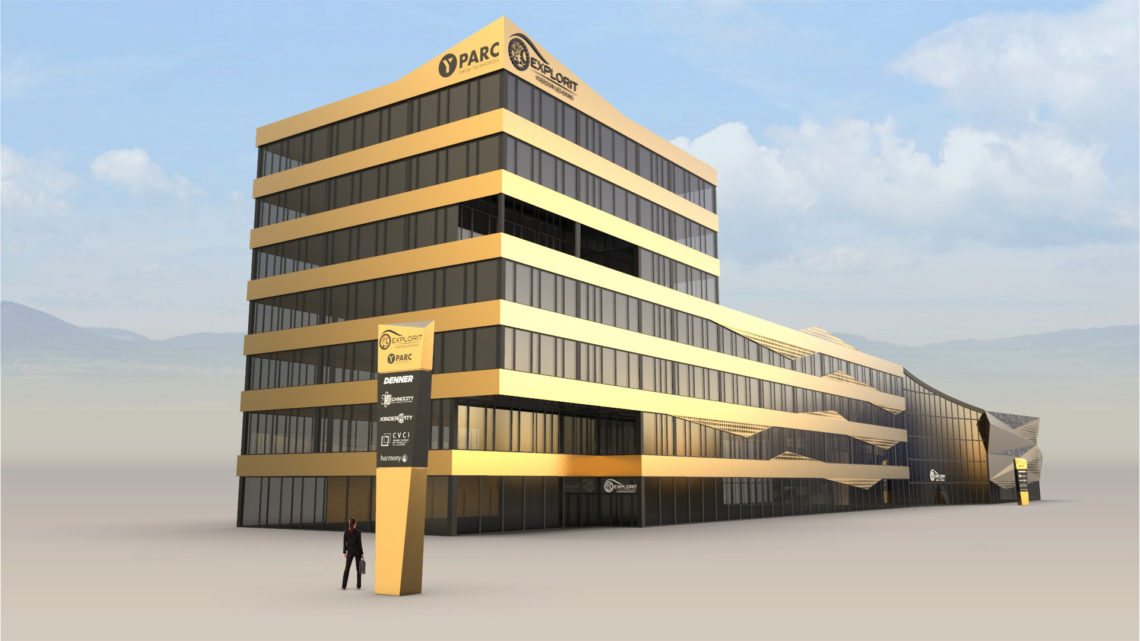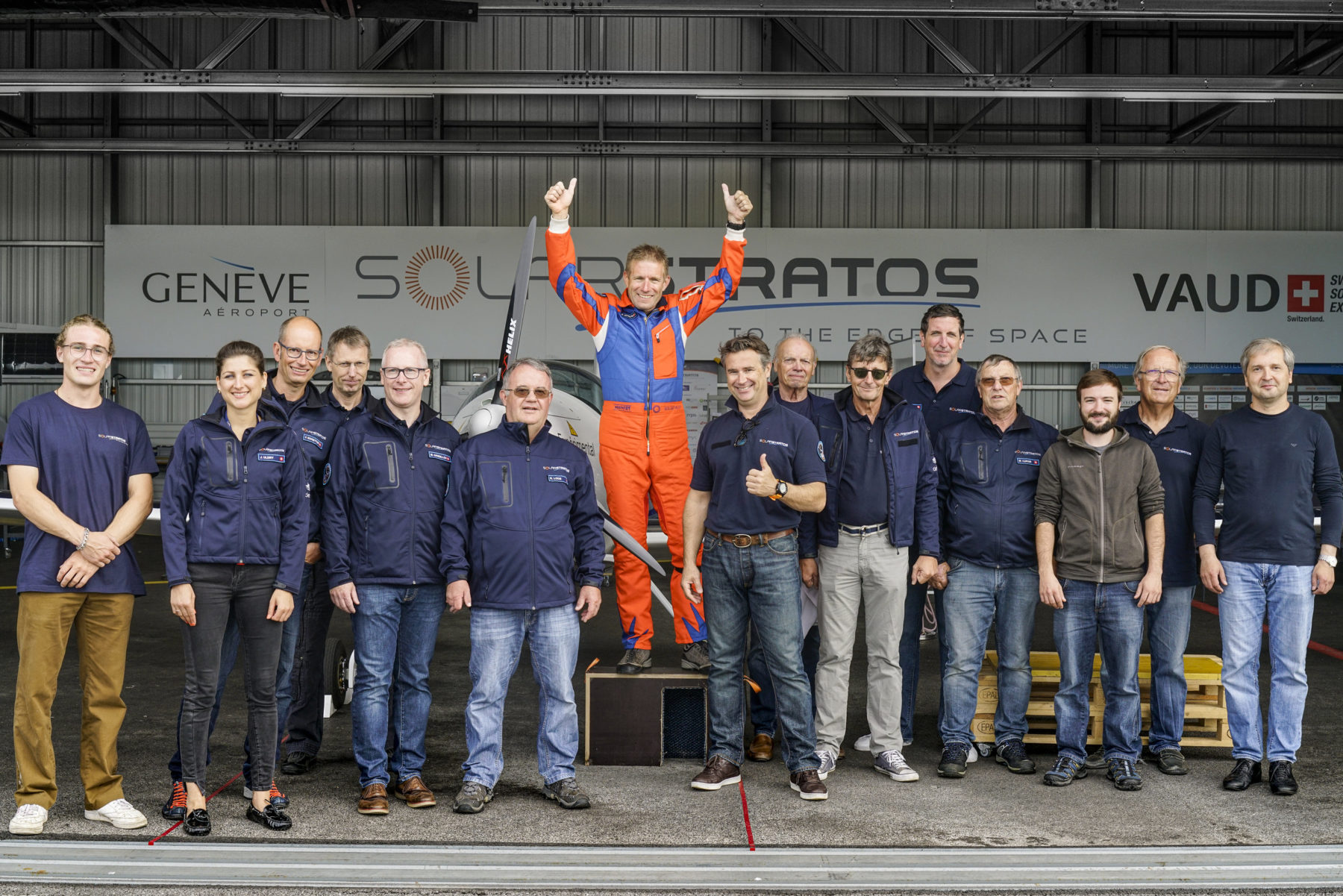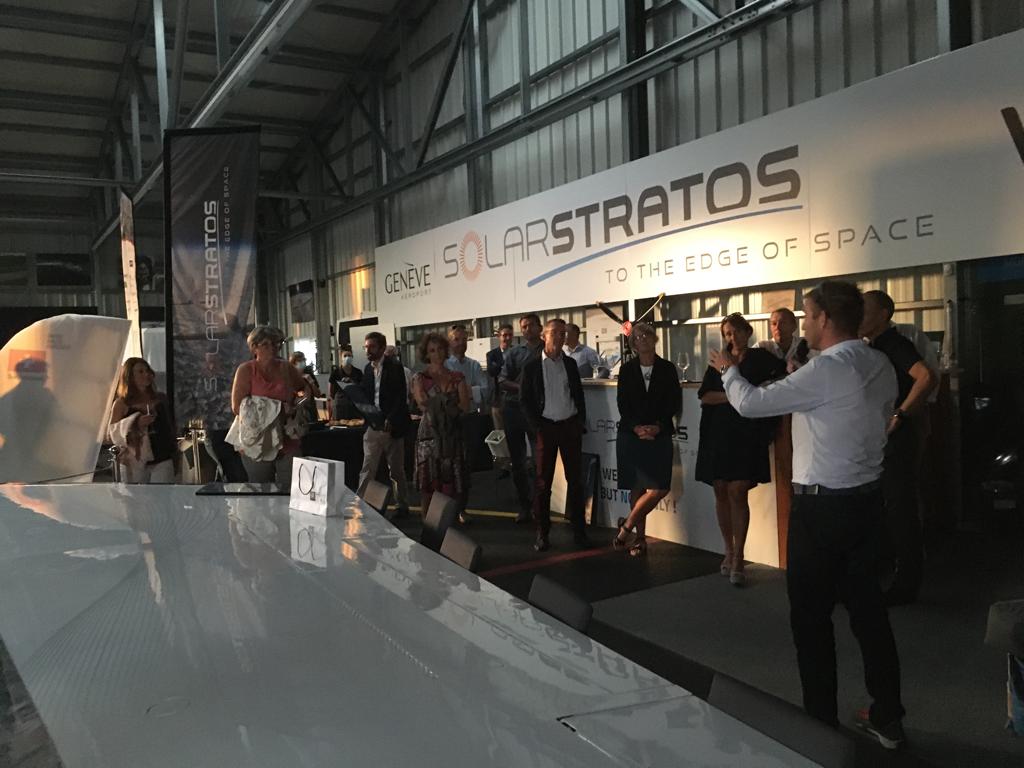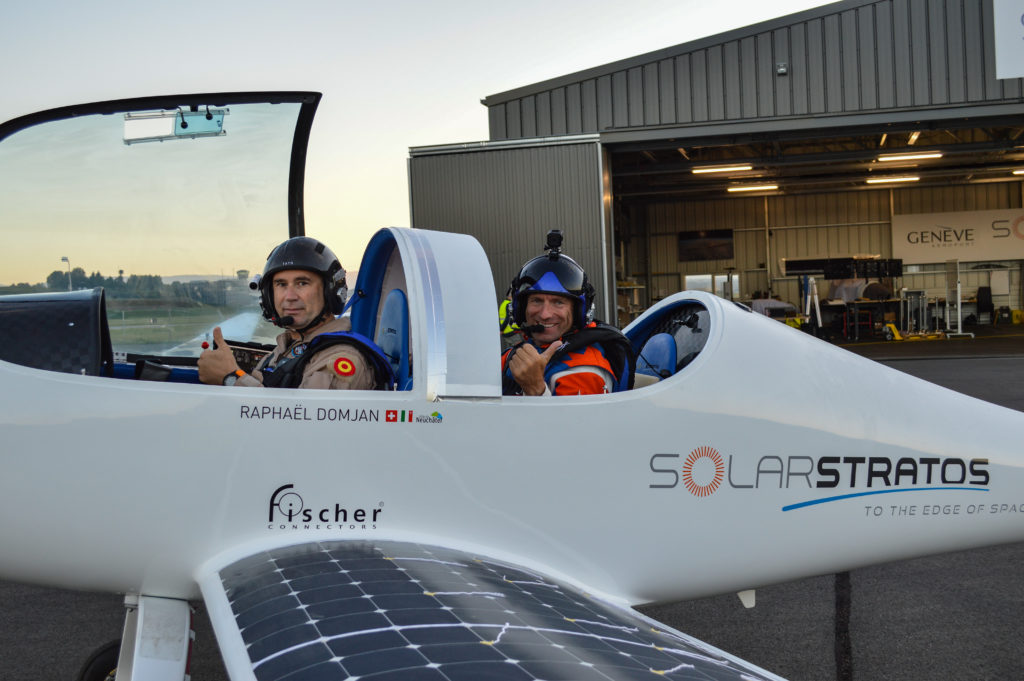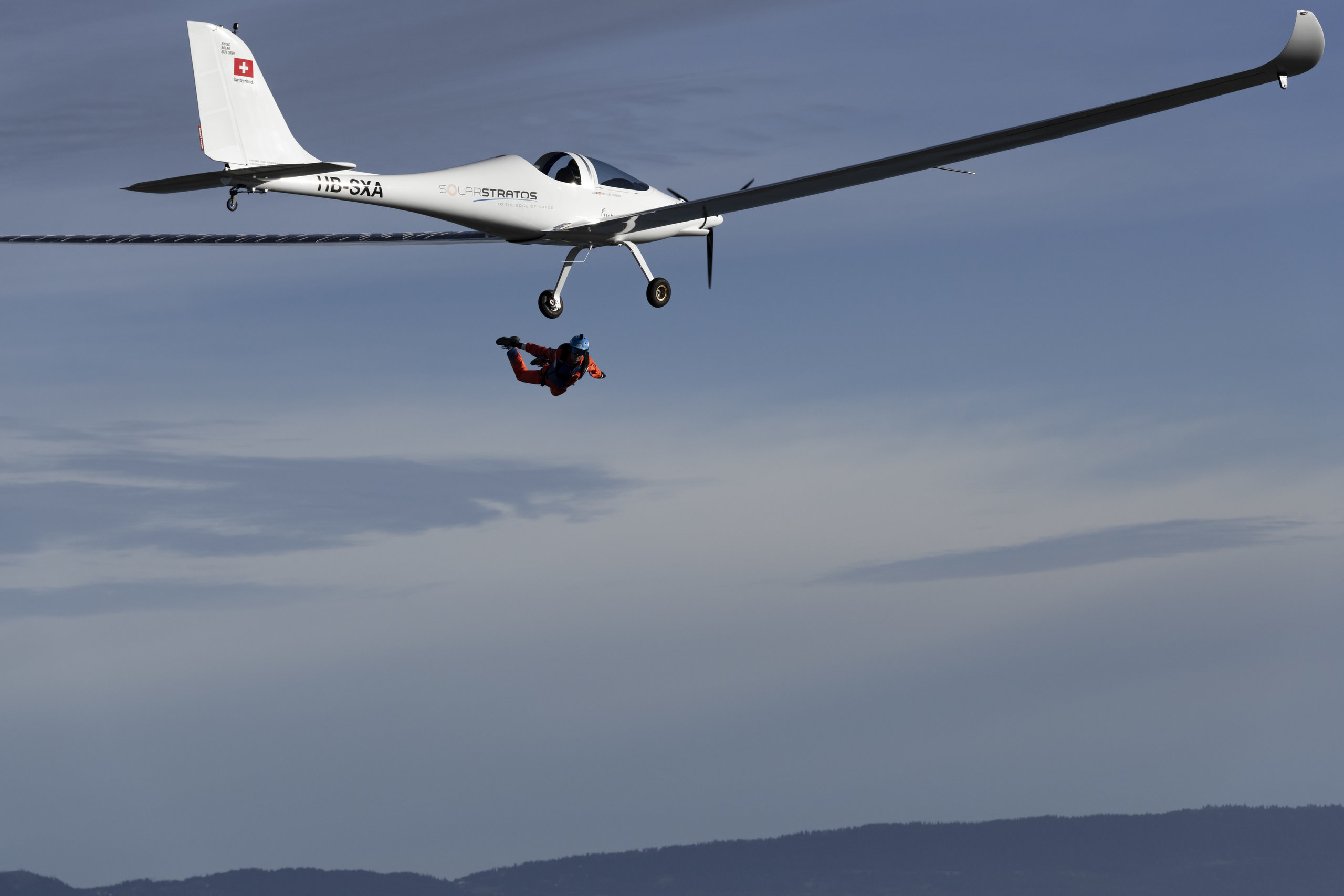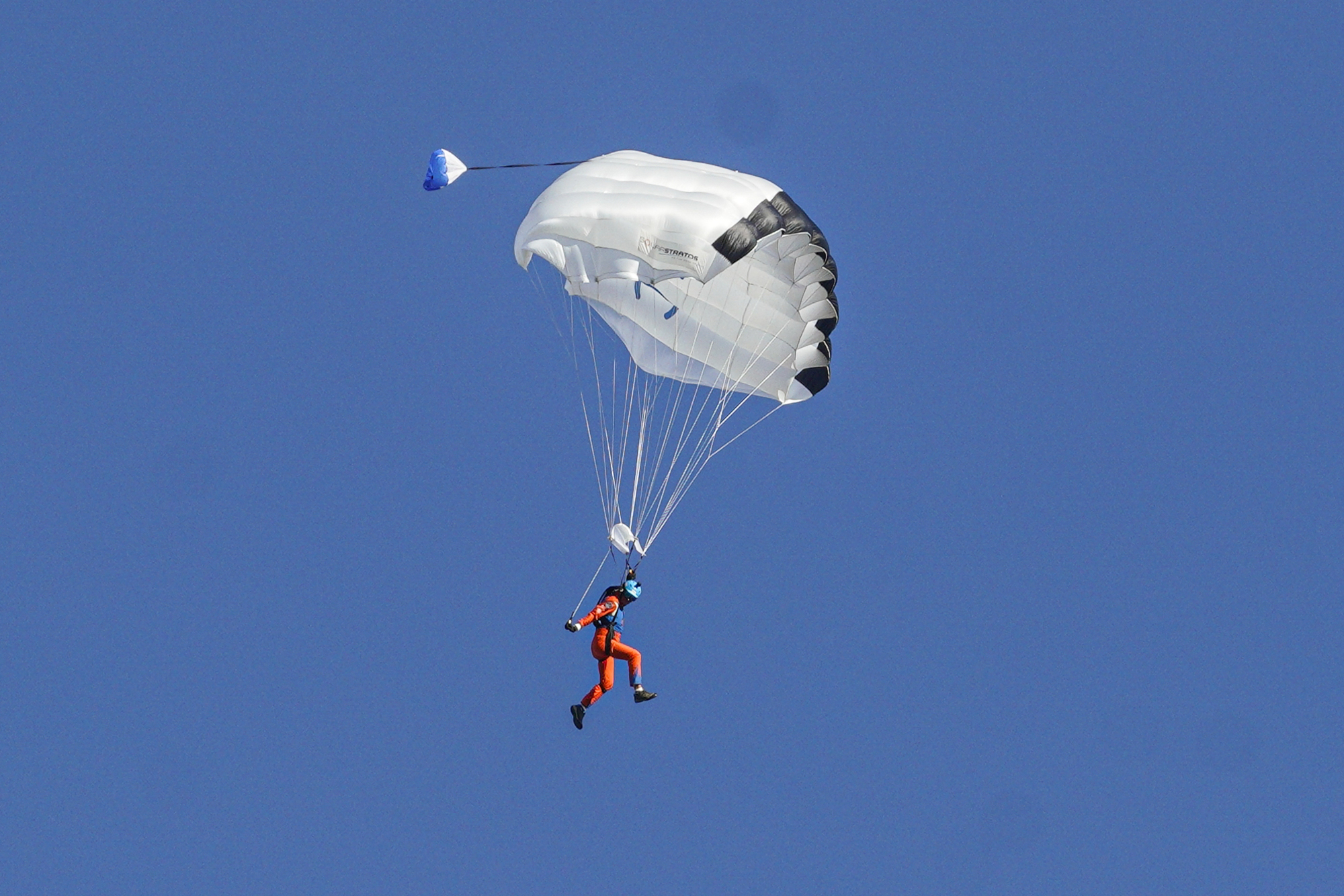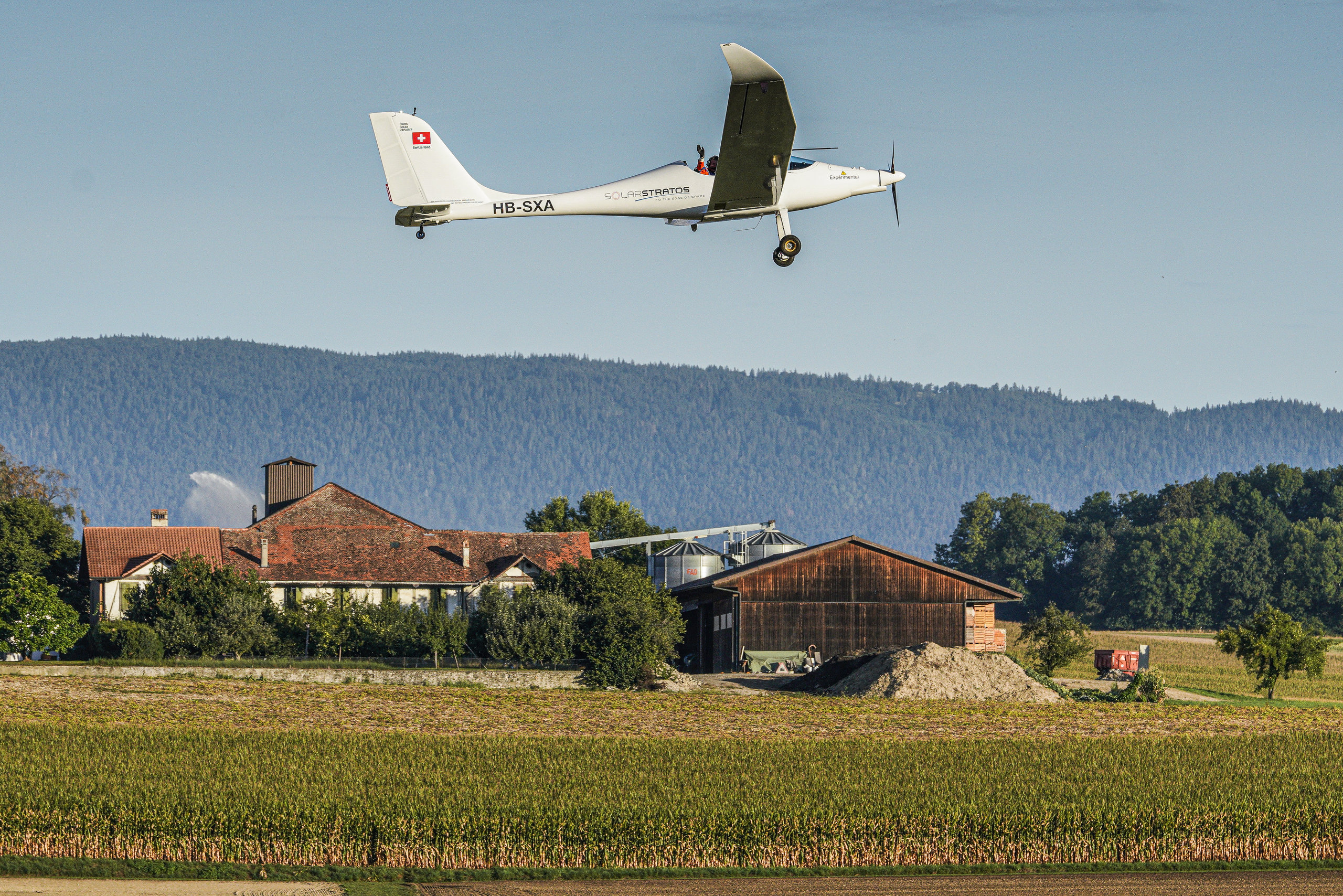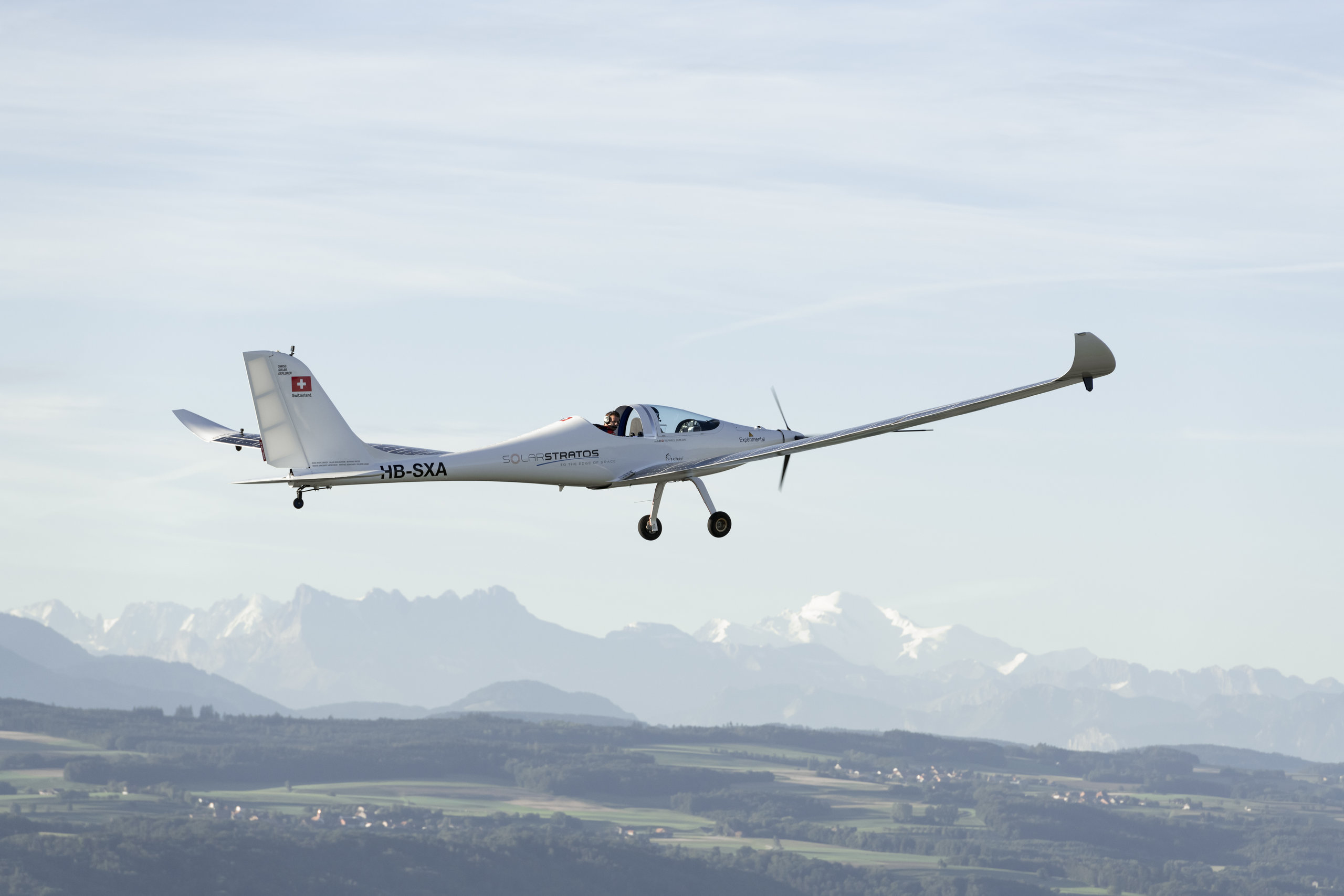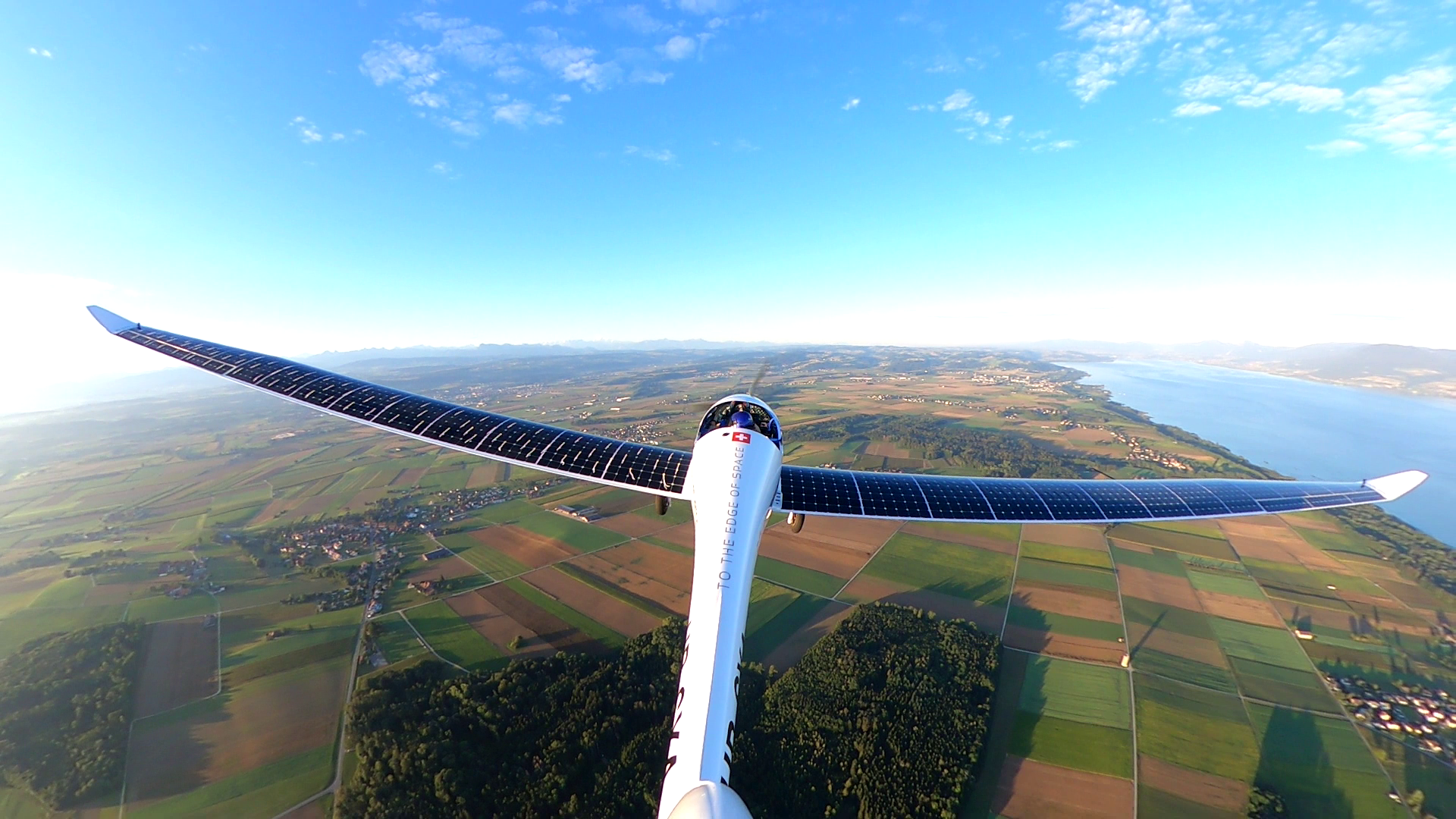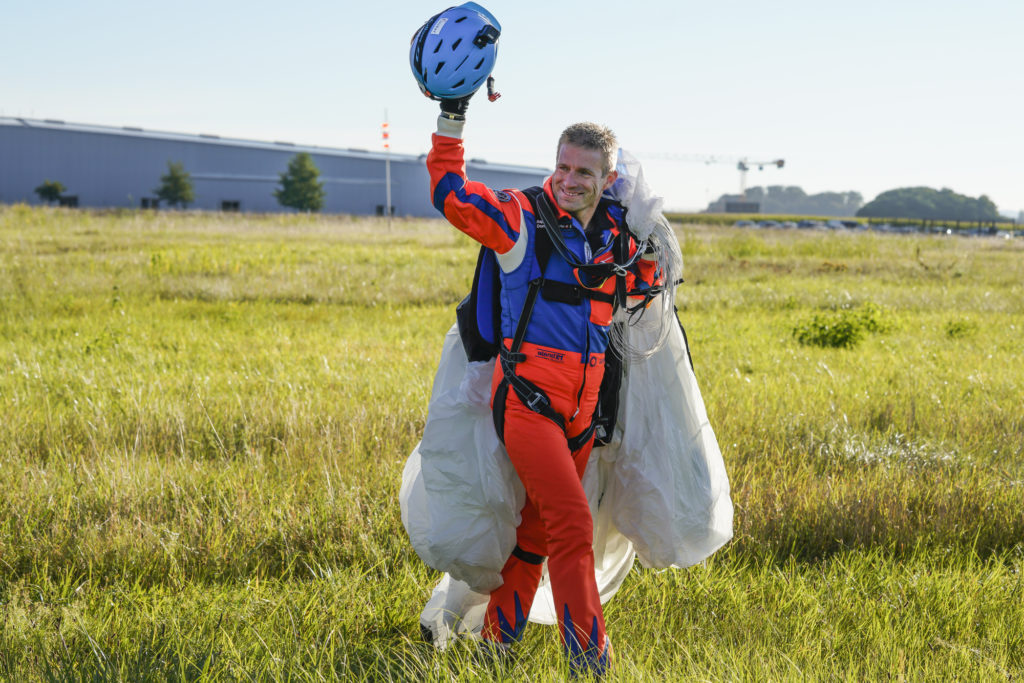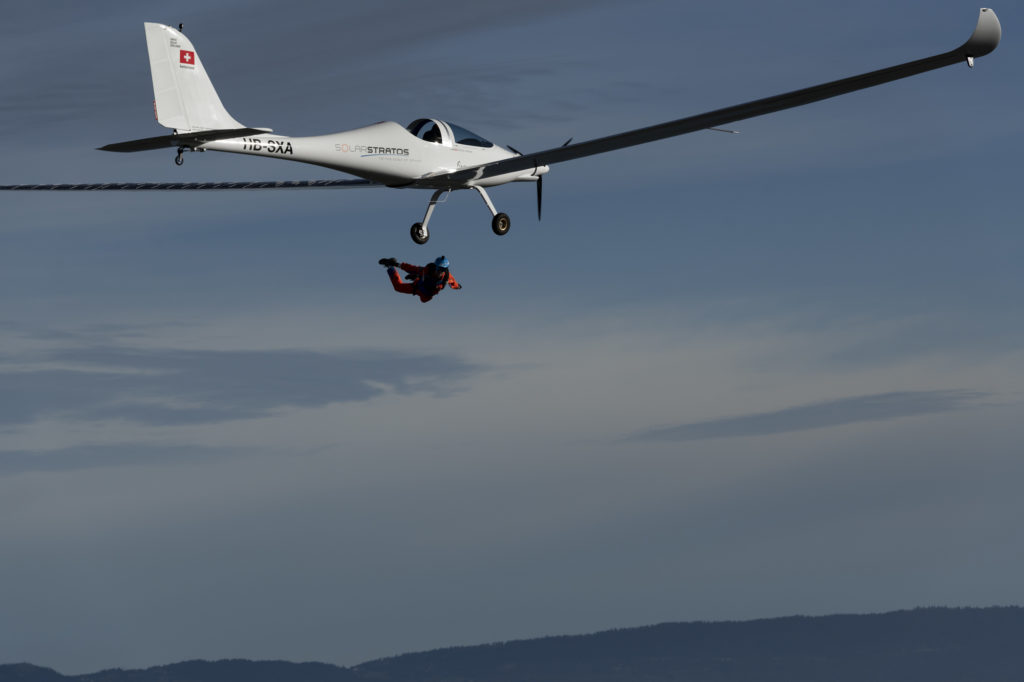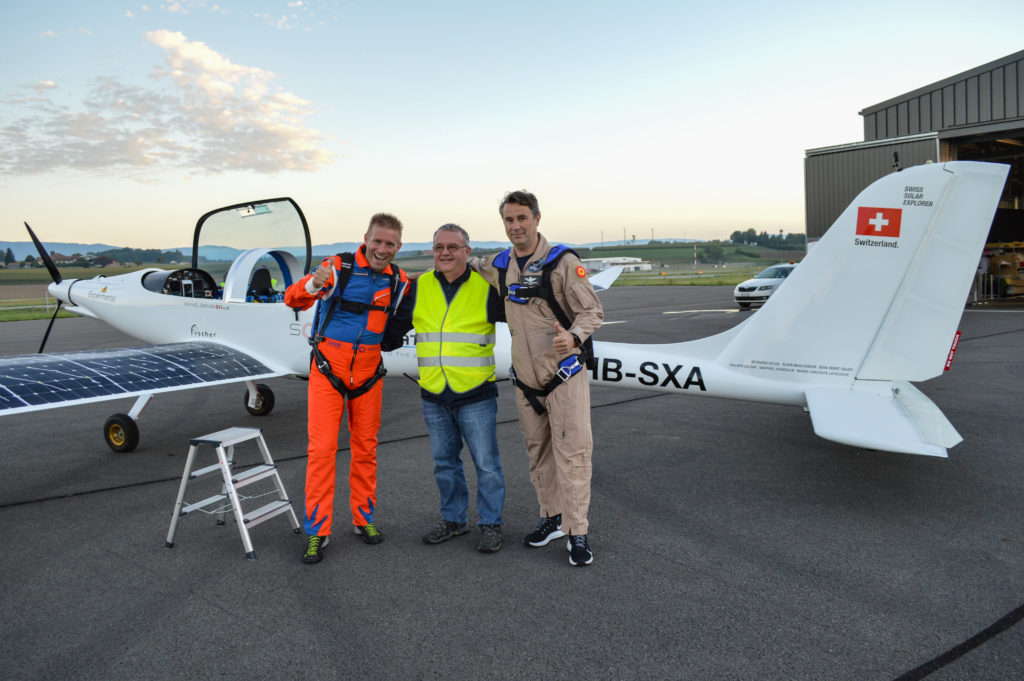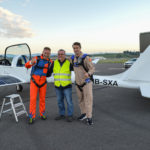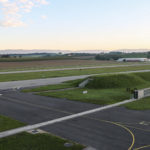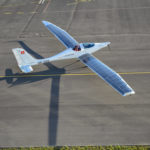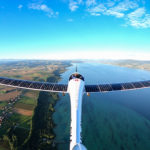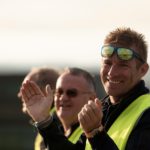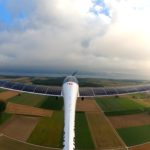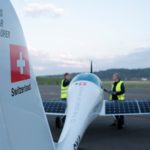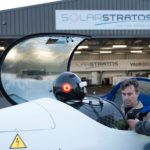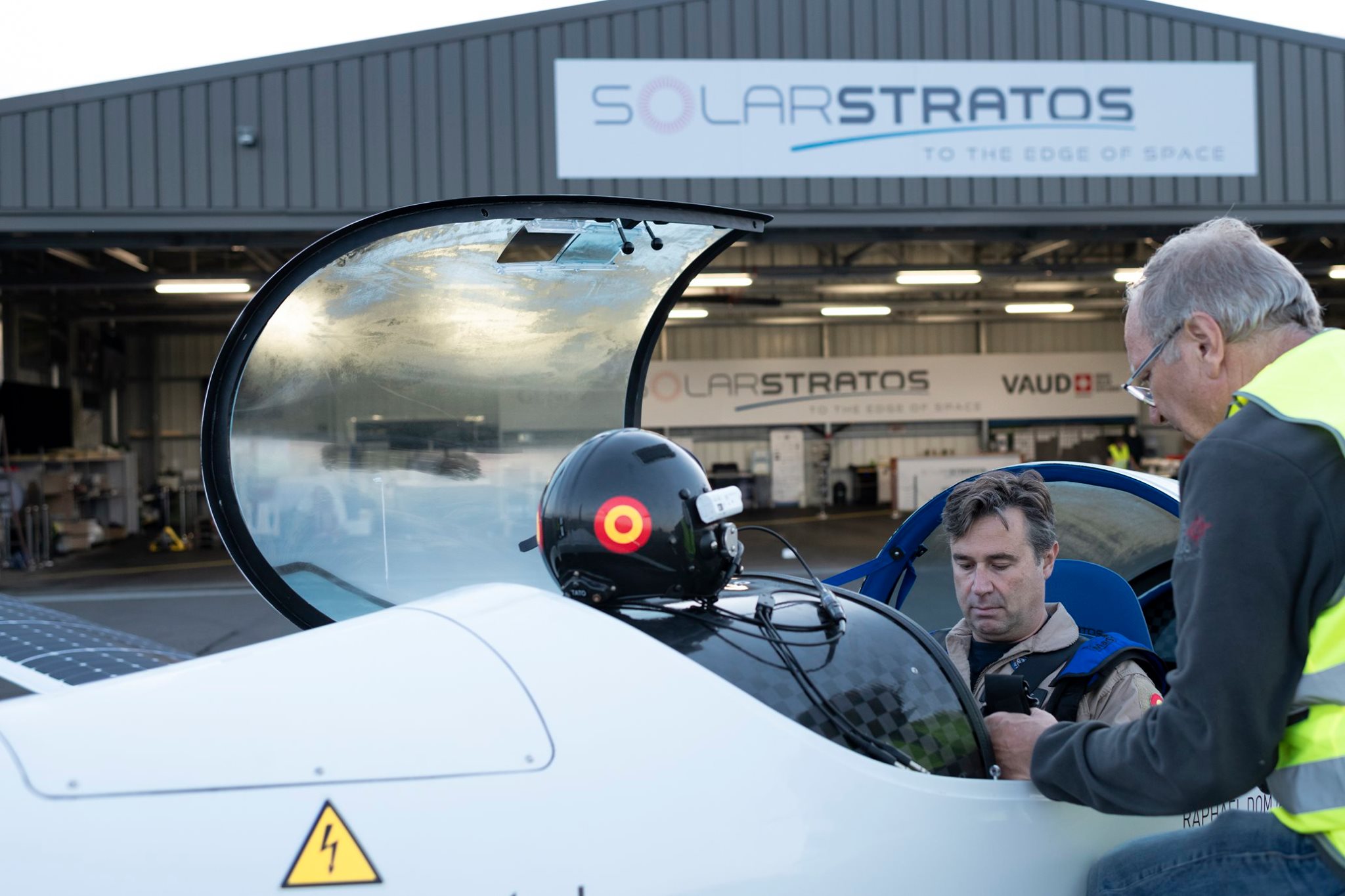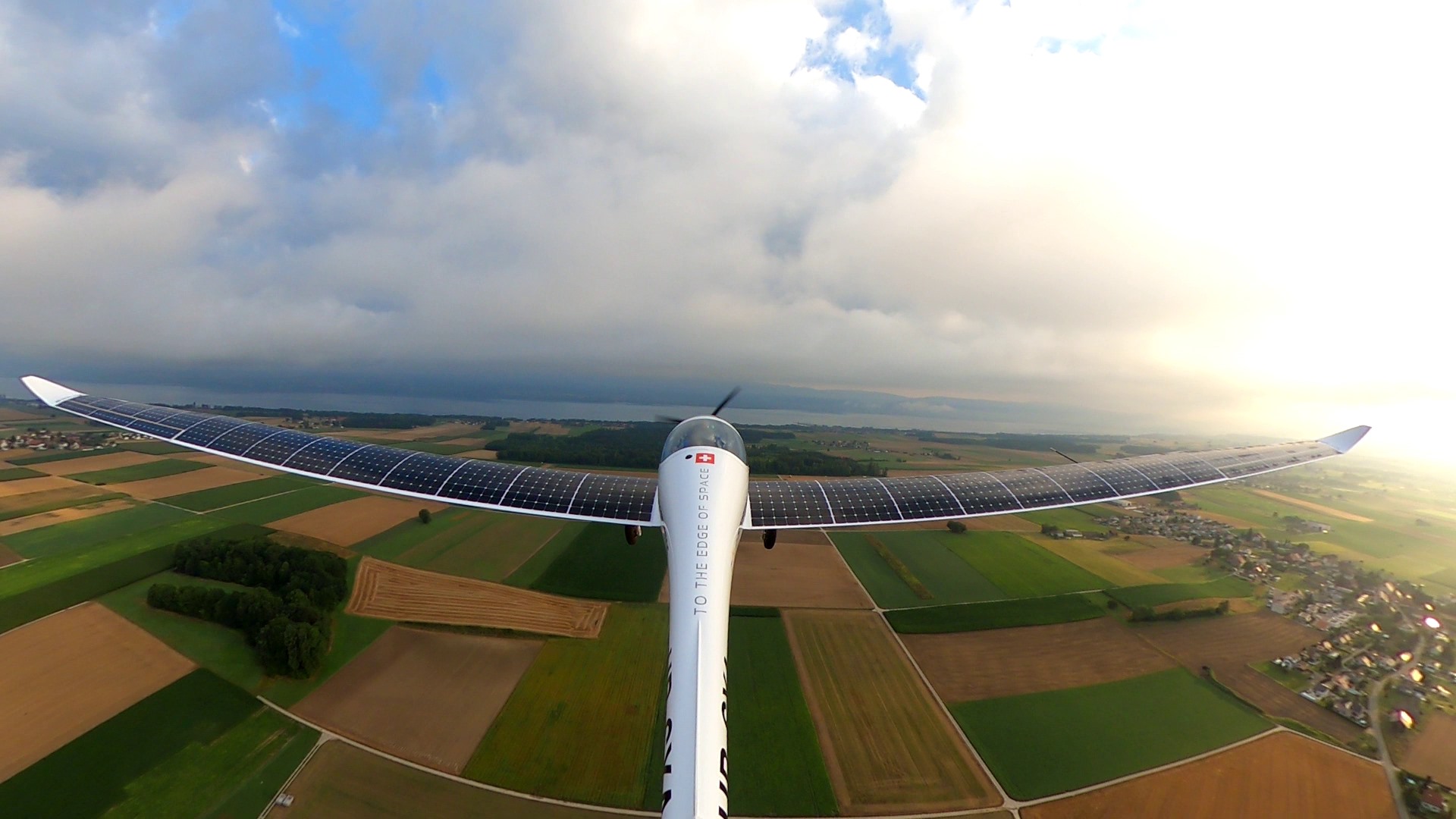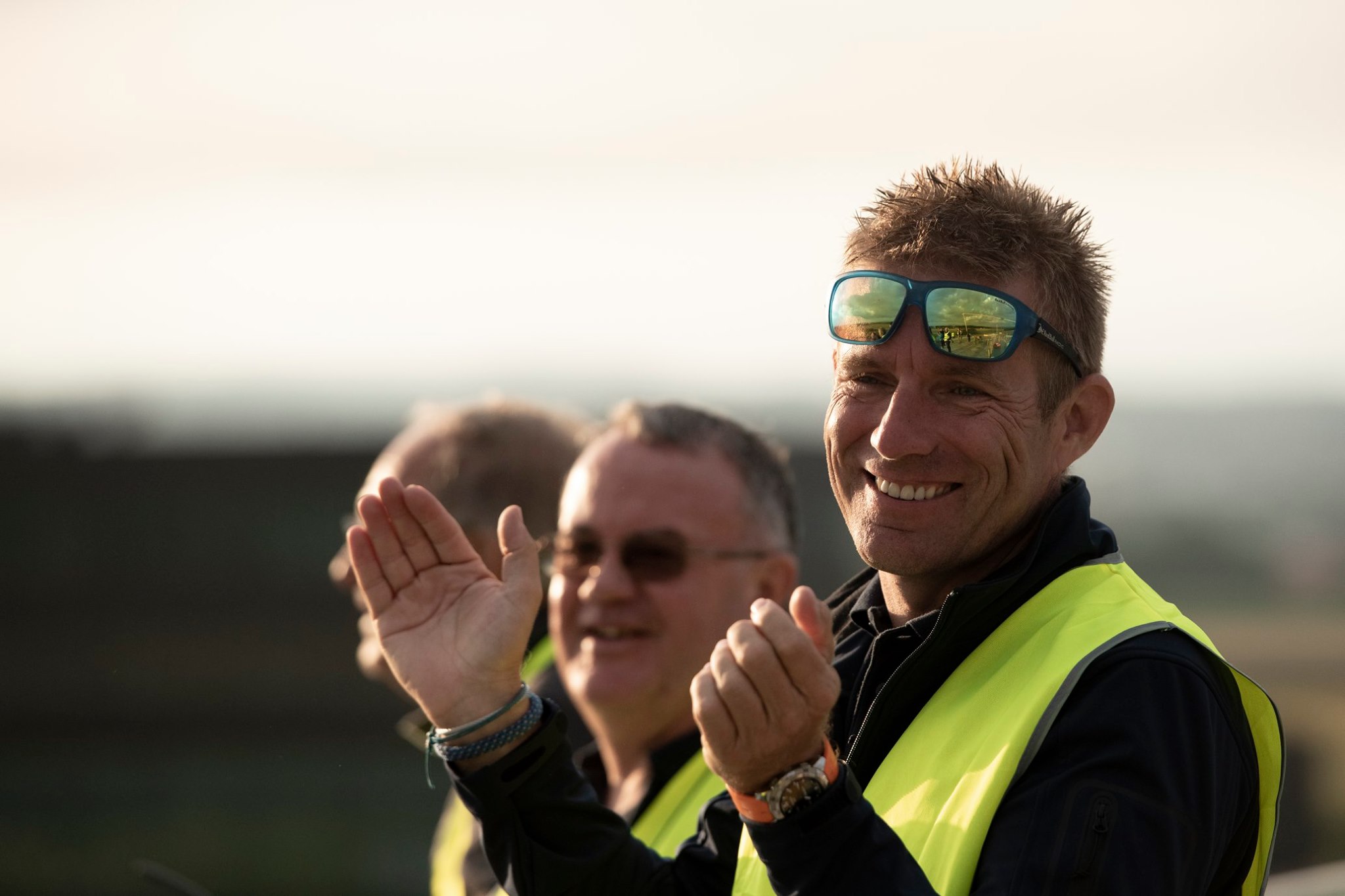Fully charged and ready for action
SolarStratos kicked off 2021 with renewed energy! Despite the pandemic and current health measures, the entire team was able to meet via video conference to review the achievements of 2020 and to prepare and plan for the coming months. Top of the agenda was the resumption of test flights in the spring and the ongoing training for Raphaël Domjan, our pilot and man behind the project.
A more efficient aircraft
Our solar aircraft is currently with our partner, ElektraSolar, in Germany, where it is undergoing some improvements ahead of the next round of test flights. By enhancing the aerodynamics and increasing battery life, it should be possible to reduce the total weight of the aircraft while ensuring maximum safety. Quite a challenge for our technical team!
New electrical circuit
SolarStratos will be equipped with an upgraded electrical system and new batteries. These modifications will allow more power from the batteries and will improve their heat management.
In addition, a new display providing more details to the pilot on the general conditions of the electrical system, will be installed in the cockpit.
Come and find us at EXPLORiT
Il y a quelques semaines, nous vous annoncions l’incroyable opportunité pour la Fondation PlanetSolar et l’aventure SolarStratos de rejoindre EXPLORiT et d’y installer un stand permanent. C’est chose faite.
Dès le mois d’avril, les visiteurs auront la possibilité de retrouver l’histoire du premier tour du monde en bateau solaire, les projets et éco-aventures réalisés par Raphaël Domjan et son équipe, ainsi que le simulateur de vol avec lequel notre éco-explorateur s’est entraîné pour préparer les premiers vols à bord de SolarStratos.
Le stand abritera également la Fondation Race for Water, qui a repris le bateau PlanetSolar.
Lien vers EXPLORiT : https://explorit.ch/fr/
Ground vibration test
The long awaited ‘Ground Vibration Test’ was carried out in Payerne earlier this month much to the delight of the technical team. It was managed by a German expert and enabled the team to collect a maximum of data relating to the aircraft’s potential, particularly during flights at high altitude.
Preparing for next season
The winter break coincides with some scheduled maintenance and development work ahead of next season, so SolarStratos will travel to our partner, ElektroSolar, in Germany, where the batteries and management system will be replaced, along with a few other things.
New official partner: Active Solar joins our eco adventure
We are delighted to announce a new partnership with Active Solar (Active Niche Funds SA), the leading investment fund specialising in the global solar energy sector. Launched in 2008, the Lausanne-based company is an investment fund open to the public, with daily liquidity. It was the first to specialise in the solar sector.
The arrival of Active Solar represents a significant opportunity, not only for the success of the SolarStratos mission, but also for the promotion of the economic potential of solar energy.
Raphaël Domjan and the SolarStratos team are thrilled with this partnership and extend their thanks to the leaders of Active Solar for their trust. The SolarStratos team also extends its gratitude to the rest of its partners for their continued support. They are delighted to continue this eco adventure with them!
Happy New Year celebrations!
Raphaël Domjan and the SolarStratos team members wish you and your loved ones a Merry Christmas and a Happy New Year 2021!
In these troubled times, we would like to thank you for your loyalty. 2020 has been a complicated year and we are sincerely grateful for your continued support. Fortunately, together, we have succeeded in setting two world records which have allowed us to convey our optimistic message about a world that is more respectful of the climate and the environment.
We look forward to seeing you again next spring, take good care of yourselves and à bientôt!
StratoTime
As a thank you, we offer you a retrospective of our 2020 activities.
Discover our teaser covering our first solar sky dive and the first jump from an electric aircraft !
SolarStratos to the edge of space…
While test flights and world premieres are already history, the team has been busy on a number of different fronts. One of the more prominent ongoing projects is a documentary called “To the edge of space”, directed by Stéphane Chopard that chronicles the SolarStratos project since its inception. Co-produced by RSC Film Productions and Gedeon Programs, the first instalment will be delivered to Planète+ and RTS at the end of the year for broadcast in 2021.
“The objective of the documentary is to present this extraordinary human adventure against its backdrop of technology and innovation,” explained Stéphane Chopard. “The script writing and editing are currently underway in Paris. The story starts from Raphaël Domjan’s dream and depicts the different stages of the adventure, its challenges, successes and doubts. By telling the story, the documentary seeks to demonstrate that technology available today can allow for a dream of a better world.”
…to the road, in an electric car!
“A CONTRESENS – Voiture électrique, la grande intoxication ?”
This was the tantalising title of an evening hosted by Raphaël Domjan and the PlanetSolar Foundation at the beginning of October at the Arcades cinema in Neuchâtel.
The meeting was scheduled to coincide with the documentary of the same name, directed by Jérôme Piguet, following a lengthy investigation by pioneer, Marc Müller, who has done multiple world tours in an electric car and is a specialist in renewable energies for the Federal Office of Energy. In his documentary, alongside his team from Nous Production, he counters the lies told about the electric car.
After the documentary was aired, the debate was heated. Raphaël Domjan, Marc Müller and Jonas Schneiter exchanged their points of view on the development of the electric car and the audience was able to shape its own opinion on electric mobility and its future. It was a constructive and enriching evening and our thanks go to those that joined us. The documentary can be viewed on Swisscom TV.
SolarStratos at EXPLORiT
Just a stone’s throw from the SolarStratos headquarters at the heart of the Y-Parc technology centre, ‘Kindercity’ is due to open under the EXPLORiT banner. Kindercity is a concept dedicated to children from 0 to 12-years-old and parents wishing to discover the world of science and technology. It is scheduled to open this Autumn 2020.
PlanetSolar Foundation and SolarStratos will be making the most of this incredible opportunity to set up their own area where they will be able to share world premieres achieved on water and in the air! It will also be an opportunity to highlight the potential of renewable energies as demonstrated by Raphaël Domjan and his projects in Switzerland and abroad.
The SolarStratos team wishes Explorit every success and looks forward to the opening!
Link to EXPLORiT: https://explorit.ch/fr/yverdon
A look back at an incredible summer
Raphaël and the SolarStratos team take a look back at an extraordinary period that will be remembered for a long time to come!
No sooner had the SolarStratos team welcomed test pilot Miguel A. Iturmendi to the Payerne base in early July, than the aircraft was in the air for its first round of test flights! The team held its breath as the plane took off, we were confident, but nonetheless, it is always a nerve-wracking moment. Everything had been prepared for the flights to go as planned, and they did!
Next came the first tandem flight with Raphaël Domjan onboard the experimental solar plane, and before we knew it, the big day was upon us – our two world premieres: the first jump from an electric plane and the first solar free fall. An extraordinary moment! The team was focused and confident as SolarStratos took to the sky, the friends, family and partners gathered at the Payerne base for the event, were tense as they waited for the jump. When Raphaël’s parachute opened, the collective sense of relief was palpable and as Raphaël and the plane touched down safely, the applause was deafening. It was a very intense moment, but we did it and SolarStratos will go down in the history books.
After just a moment to enjoy this dual achievement, the technical team got back to work to prepare for Raphaël to swap with Miguel and take control of the plane while the test pilot would sit in the back seat and act as an instructor.
All in all, it has been an exceptional summer. As a group, we have achieved everything that we planned and in the most glorious manner! Miguel A. Iturmendi has gone home to the United States and will return next year for another round of flights and new challenges.
Clippings
The two world premieres were a huge global success in terms of image. We were hoping for good exposure, but we never imagined such a reaction! Here are two numbers that make us proud and demonstrate the interest the world has in the development of this type of experimental project.
- 140+ TV stations picked up our two world premieres and broadcast them around the globe
- 158,800 likes on the BBC News Instagram page that has 16 million subscribers
Partners’ evening
As a thank you to our partners for being present at our side and for having faithfully supported us during this extremely difficult period of COVID-19, we organised a gathering at the base in Payerne. A good time was had by all and we did a performance review and looked at upcoming deadlines.
First raid in an electric plane
100 years after the Aéropostale pioneers set up their French airmail company, the Raid Elektropostal was launched! The event is organised with several stages that take the pilots from Lausanne to Aix-en-Provence via Toulouse and Marseille.
PlanetSolar Foundation is a partner of this eco-adventure that promotes respect for the environment, and the Foundation chairman – our very own founder and pilot of SolarStratos, Raphaël Domjan – flew several stages for the Raid, aboard a Pipistrel Velis type aircraft, the first EASA certified electric aircraft.
A perfect tribute to the pioneers of Aéropostale!
First tandem flight onboard SolarStratos
This month we are celebrating two world premieres AND achieving our first tandem flight with Raphaël Domjan onboard with test pilot Miguel A. Iturmendi. The pair flew for 48 minutes with Raphaël sitting behind Miguel, watched closely by our partners, Club Members and the media!
This was a conclusive experience and decisive in the pursuit of scheduled test flights and upcoming world premieres.
World premieres: first jump from an electric aircraft and first solar free fall
SolarStratos has set its first world premieres! Watched by a large group of media and guests, Miguel A. Iturmendi flew Raphaël Domjan to an altitude of 5,000 feet (1,520 metres) from which the eco explorer performed the first parachute jump from an electric plane and the first solar free fall in history.
After just a few minutes suspended beneath the parachute, Raphaël landed at Payerne Aeropole followed 20 minutes later by the solar plane which then returned to the SolarStratos base.
This flight and these successes are of central importance in the history of the SolarStratos project. “The success of this first jump from an electric plane and this first solar free fall are the result of tremendous work by the whole team and our technical and scientific partners. This is an important step in the development of more environmentally friendly aviation”, said Raphaël Domjan after landing.
Thirty flights achieved
SolarStratos has notched up over 30 test flights, including almost 20 since flights resumed in July. The average flight time is around 30 minutes, while the longest was 51. The flights to date have been carried out by our test pilot accompanied by Raphaël Domjan at an average of 5,000 feet (1,500 metres).
Raphaël Domjan at the controls of the plane
After flying as a passenger, Raphaël Domjan took control of the plane and flew his first training flights under the test pilot’s instruction. Objective no. 1 is to take control of the plane and to become familiar with the cockpit.
Raphaël Domjan, founder and future pilot of the SolarStratos solar aeroplane, achieved the first ever jump from an electric plane this morning in Payerne. He also made the first solar-powered free-fall of all time.
Raphaël Domjan and the SolarStratos team achieved two world firsts this morning in Payerne.
Exclusively powered by solar energy, the experimental aircraft took off from the Broyard airfield at 7.40 am, with test pilot Miguel A. Iturmendi and Raphaël Domjan, initiator and future pilot of SolarStratos.
After a short climb and after reaching an altitude of 5000 feet (1520 metres), Raphaël Domjan threw himself into the void, freefalling several hundred metres and reaching a speed of more than 150 km/h before landing in front of the team base and an array of guests.
Two world firsts were achieved during this historic flight: Raphaël Domjan made the first jump in history from an electric plane and also accomplished the first solar free fall, without any CO2 emissions.
“I am very proud of this achievement”, said the Neuchâtel explorer and lecturer. “Our aim is to demonstrate the potential of solar energy and electric mobility. It is a message of hope for future generations: tomorrow they will still be able to dream and carry out activities such as parachuting, for example, but without greenhouse gas emissions and in absolute silence. I have always been fascinated by aeroplanes and I hope that this will continue to make the young people of tomorrow dream, thanks to aircraft that are more respectful of our planet and our climate.”
Very impressed by the recent progress of SolarStratos, and sensitive to the image conveyed by the SolarStratos project, Nicolas Bideau, Director of Presence Suisse, said he was very moved. “One of my roles is to find ambassadors for Switzerland, who convey a positive image of our country. Historically, Switzerland was built by pioneers who took risks. This project reflects the power of dreams, turned into a concrete project for our country.”
Passionate about the SolarStratos adventure, Bertrand Piccard is “always happy to see people realise their dreams. What Raphaël does is fantastic”, he says. “His project illustrates the new cycle that now characterises aviation, which must imperatively adapt to renewable energies.”
Representing the International Aeronautical Federation, Alphons Hubman, states that he is “always on the lookout for new technologies. The SolarStratos project illustrates this new trend with a pioneering spirit. What they have achieved is extraordinary”.
The world premieres of the SolarStratos team were broadcast live on live TV, and can be viewed below:
The SolarStratos experimental aircraft made its first double handed flight this morning in Payerne, Switzerland. It was also the first flight of Raphaël Domjan, the initiator and future pilot of the project. SolarStratos becomes the second solar airplane in history to fly with a passenger.
The SolarStratos team continues to make great strides! The first flight of the aircraft equipped with its new wings took place on July 27th. This morning, the experimental electric plane made its first double handed flight; in addition, Raphaël Domjan, the initiator and future pilot of the project, made his first flight. SolarStratos becomes the second solar airplane in history to fly with a passenger.
“What a long way I have come since I dreamed of flying with solar energy during my Pacific crossing aboard my solar boat PlanetSolar, it’s incredible! Thank you to all my team, our partners and all the people who have supported us for all these years,” said Raphaël Domjan at the end of the flight.
Piloted by test pilot Miguel A. Iturmendi, SolarStratos took off at 7:00 am from the Payerne aerodrome and made a 48-minute flight. Numerous tests to prepare for the next records were carried out during this flight. Starting next week, the SolarStratos team will attempt two world firsts, the details of which will be announced shortly.
Beyond these technological and human feats, SolarStratos’ priority objective is to promote solar energy in order to protect the climate of our planet from greenhouse gases, by demonstrating that concepts and projects that seemed inconceivable a few years ago are now possible thanks to the technologies available today.
First of the test flights
On 23 July, at dawn, SolarStratos took to the skies above Payerne once again for the first of many test flights – such great news for the whole team and its supporters! July was a busy month of preparations leading up to this moment: at the beginning of the month, test pilot Miguel A. Iturmendi, ran some low and medium speed tests on the tarmac at the base in Payerne. These tests were conclusive, so the technical team made various adjustments to prepare the aircraft for its first flight in 2020.
In parallel, the Federal Office of Civil Aviation issued the permit to fly and so, on Thursday 23 July, SolarStratos rolled out of the shed and took off for a low altitude flight lasting 20 minutes! Miguel A. Iturmendi, one of the team’s test pilots, was at the controls and relished the opportunity to familiarise himself with the solar prototype. On landing, he was very happy with the first experience: “I got some good feedback. SolarStratos feels like a big and very good glider. The aircraft’s climbing performance is good, better than I imagined. And you have to be vigilant when landing as the plane needs a long landing distance.”
This first flight and the upcoming test flights are designed to settle technical details in order to be able to gently increase the altitude and duration of the flights.
StratosTime
Here are the details of the maiden flight from the point of view of the technical team:
Thursday 23 July 2020: it is still dark at the Payerne airport. Raphaël Domjan, Roland Loos, test pilot Miguel A. Iturmendi and the entire technical team meet at the SolarStratos base.
0515: technical briefing and reminder of the planned flight manoeuvres
0530: radio and weather checks with the control tower and the chief flight officer
0540: review of synchronisation procedures, turn on measuring instruments (in particular the GPS) and sensors (flight recorder)
0545: pre-flight checks and inspection of the plane
0550: SolarStratos leaves the hangar
0600: engine system check
0630: radio check with the control tower, gate is opened
0645: taxi to runway for take off
0700: take off and first flight lasting 20 minutes
0720: soft landing and return to the base
This maiden flight was a moment of celebration for the technical team who were watching everything from the airport terrace and a happy moment for Raphaël who exclaimed: “We are back in the air! Thanks everyone! It’s awesome!”
Next came a debrief for the test pilot and the technical team, followed by a well-deserved coffee and croissant!
Welcome to our new partner
SEGULA Technologies is a French engineering group that leads projects in many different fields, including aeronautics. They are joining SolarStratos as partner and the team welcomes them onboard and thanks them for their support!
Thank you!
The fact that we are able to fly again is thanks to your unconditional support and we are delighted to be able to share these exceptional moments of our eco exploration with you. Thank you all for being at our side and for your continued support. We look forward to continuing this SolarStratos Mission together and are excited to be at the very beginning of a magnificent adventure.
We wish you a wonderful summer and look forward to seeing you again soon!
Raphaël Domjan and Roland Loos
The solar-powered aircraft SolarStratos resumes flights
Two years of technological development paid off this morning as the solar-powered aircraft, SolarStratos, took to the skies above the team base in Payerne, Switzerland. The team has its sights set on a number of world records and world premieres this year and the exciting project has attracted new partners eager to join the explorer, Raphaël Domjan and his team.
Payerne, Switzerland, 23 July 2020 – Raphaël Domjan and the SolarStratos team are delighted to announce that the SolarStratos test flights have resumed. The team’s renewed activity will include a series of firsts that will culminate in 2021 with an attempt at high altitude flight powered exclusively by solar energy.
“Despite the complex situation we are currently experiencing, we are in an extremely positive phase of our project,” said Raphaël Domjan, the mastermind and pilot behind the mission. “In recent weeks, all the pieces of the puzzle have come together and this morning, at long last, we flew again with our test pilot Miguel Iturmendi at the controls, and everything went smoothly.”
To maximise on weather conditions, SolarStratos took off at 6:50 am. The aircraft soared effortlessly on its elegant new wings equipped with winglets at 800 metres above the Payerne aerodrome for twenty minutes before touching down again.
“The changes made in recent months have borne fruit,” said Raphaël Domjan. “The plane is more stable and reliable than during our first round of test flights. Today we are beginning a new chapter that will allow us to reach extraordinary goals, to make the public dream and to convey a positive message on the potential of solar energy to fight climate change.
The SolarStratos experimental project was launched in December 2016 and has undergone rigorous development over the years, gaining great experience at the cost of occasionally complex challenges, but without ever deviating from the ultimate objective. On July 6, 2018, the left wing of the aircraft was broken during a stress test at the team’s base in Payerne, no one was injured, but the various procedures that resulted from the incident and the design of the new wings caused significant delay. Resuming the test flights was further delayed by the recent Covid-19 health crisis.
The SolarStratos operations team is on standby to continue the test flights scheduled for tomorrow weather-permitting, with the aim of extending the aircraft’s flight range.
This exciting new phase of the project has attracted new partners, including the consulting company Segula, who will work on digital simulations, and the law firm NVB in Neuchâtel, who will manage any legal aspects relating to the eco-adventure.
“We are fortunate to benefit from loyal partners who completely understand that SolarStratos is a unique and sensitive experimental aircraft,” said Roland Loos, the team CEO. “The pioneering spirit of this project means that we are breaking new ground in terms of technological challenges and it is thanks to the understanding and loyalty of our partners that we have been able to pursue this project.”
The SolarStratos test pilots will take it in turns to fly while Raphaël Domjan continues with his training to fly this unique aircraft. The first series of flights will be with a single pilot, after that two-handed flights will be scheduled, and the plane will gradually fly at a higher and higher altitude.
So, after a two-year (very active) hiatus, SolarStratos has at last taken off again and the whole team is delighted to share the next stage of the eco-adventure with the public.
Photos copyright Fred Merz / SolarStratos


